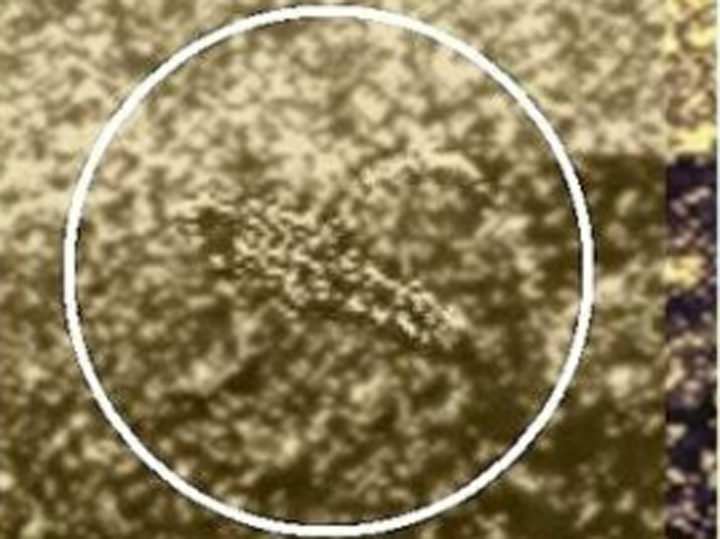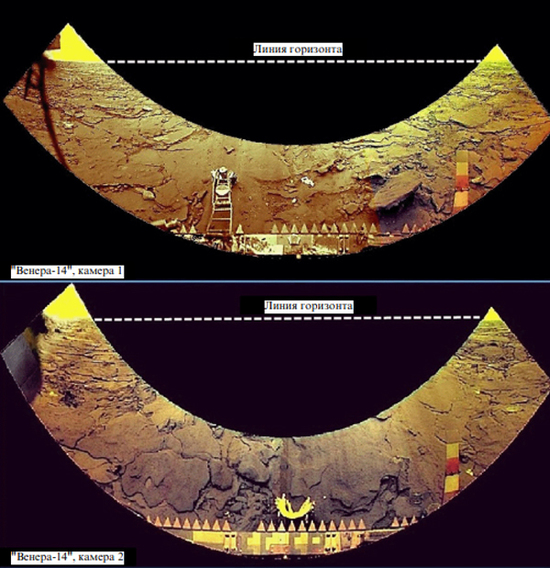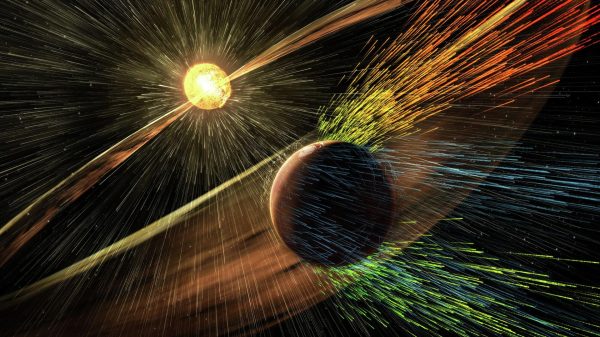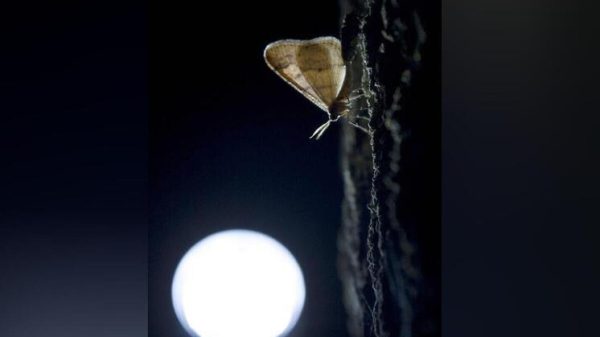One of the places where scientists do not exclude the presence of microorganisms is the Venusian clouds
Probable life on Venus is pushing scientists around the world to intensify programs to study our neighbor. Shortly before Cosmonautics Day at Moscow State University. Lomonosov held an interesting seminar on astrobiology, at which the scientific director of the Space Research Institute of the Russian Academy of Sciences, Academician of the Russian Academy of Sciences Lev Zeleny made a report on “The Search for Life on Venus.”
 The surface of Venus, photographed in color. Photo courtesy of L. Zeleny
The surface of Venus, photographed in color. Photo courtesy of L. Zeleny
Lev Matveevich began with a quote from Mikhail Lomonosov about the long-standing desire of humanity to find brothers on other planets: “Some ask: if there are people like us living on the planets, then what faith are they? If someone wants to know about it… then let him go to Venus for the same thing.” Lomonosov was ripe at the root, and it was Russian scientists who, more than two centuries after the words were spoken, first “went”, or rather, sent their landing probes to Venus. This is how we learned that the surface of Venus has far from the Earth’s climate, but as for its inhabitants…
 Scientists Arnold Selivanov and Yuri Gektin, to whom we owe the magnificent Venusian landscapes. Photo courtesy of L. Zeleny
Scientists Arnold Selivanov and Yuri Gektin, to whom we owe the magnificent Venusian landscapes. Photo courtesy of L. Zeleny
The USSR was the undisputed leader in the exploration of Venus. From 1961 to 1984, 18 devices were sent to it, 10 landings were made, and all were successful.
“Research on Venus began in 1961,” says Lev Zeleny. – The first devices that descended into the atmosphere were crushed by high pressure at altitudes from 25 to 11 km, but managed to transmit valuable information about the atmosphere.
A hydrogen corona, the absence of radiation belts and its own magnetic field were discovered, and the composition of the atmosphere was measured. It turned out that it consists of 97% carbon dioxide (CO2), nitrogen (N2), and faint traces of water. Almost all the results obtained by the Soviet “Venus” were the first.
Afterwards, according to the scientist, thanks to other devices that landed on the surface, our researchers established that the temperature on the surface reaches an average of 470 degrees Celsius, and the pressure — 92 atmospheres. Such pressure exists, for example, under water at a depth of a kilometer.
However, Soviet scientists who studied panoramas of Venus taken by the Venera-9, Venera-10, Venera-13 and Venera-14 spacecraft from 1975 to 1982 suggested that even in such… conditions there could be life .
At one time, in an interview with our newspaper, IKI RAS employee Leonid Ksanfomality spoke about the processing of old photographs taken in 1975-1982. He drew attention to unusual structures that changed their position very slowly over time, and associated them with representatives of the hypothetical flora and fauna of Venus.
“The conclusion about the existence of life on the surface of Venus was made on the basis of processing data from a television experiment performed on the surface of Venus,” says Academician Zeleny. – Now someone may be skeptical about the quality of photographs taken on another planet in the 70-80s of the last century. And in vain — these were the best technologies for obtaining black-and-white and color images of the surface of Venus at that time, developed by scientists from NII-885 (today the Russian Space Systems holding company) Arnold Selivanov and Yuri Gektin.
 A contender for a living Venusian creature (according to L. Xanfomality, very reminiscent of a scorpion). Photo courtesy of L. Zeleny
A contender for a living Venusian creature (according to L. Xanfomality, very reminiscent of a scorpion). Photo courtesy of L. Zeleny
So far, according to the scientist, the hypothesis about the existence of life on Venus has more opponents. After all, in search of signs of life, researchers most often start from what is on Earth. That is, they argue that on Venus, life should be based on carbon and liquid water and exist at a pressure on the planet of 1 atmosphere, with a maximum surface temperature of no higher than 56-60 degrees Celsius, as well as with a probable sign of habitability — oxygen .
However, if we move away from the usual paradigm and stop looking for the same creatures on a planet with different conditions as on Earth, Lev Zeleny argues, then it is quite possible to assume the presence of living objects there.
What components should be used? nature for life on Venus at temperatures around 460 degrees, a proportion of water about 2 to 10 to the -5 degree (and only in a gaseous state) and in the virtual absence of oxygen?
“As you know, when the temperature rises, chemical reactions sharply accelerate and processes begin that are impossible under normal, terrestrial conditions,” the academician argues. – On Earth, nitrogen is passive. But under conditions of high pressure and temperature, the chemistry of nitrogen can be no less diverse than the chemistry of carbon on our planet. A number of nitrogen polymers are already known that are stable at temperatures of 500 degrees Celsius and above.
From this we can assume that Venusian life may be nitrogen-based, and not carbon-based, as on Earth. As for the absence of water, in addition to the three main aggregate states of matter, at high pressures and temperatures a fourth can arise — the state of a supercritical fluid, which has the properties of both a gas and a liquid, in particular the ability to dissolve other substances. Carbon dioxide (CO2) claims to be the universal solvent on Venus, which can exist there not only in the form of carbon dioxide, but also as a supercritical fluid.
 Panoramic view of the surface of Venus on both sides from the Venera-14 spacecraft. The surface is made up of strong layered slabs of sedimentary or volcanic origin. Photo: Uspekhi Fizicheskikh Nauk magazine. Photo courtesy of L. Zeleny
Panoramic view of the surface of Venus on both sides from the Venera-14 spacecraft. The surface is made up of strong layered slabs of sedimentary or volcanic origin. Photo: Uspekhi Fizicheskikh Nauk magazine. Photo courtesy of L. Zeleny
Conclusions that life is possible outside of comfortable earthly conditions have been made over the past 10 years, and specifically on Earth. According to Lev Zeleny, scientists have studied a number of places with extreme conditions. Microorganisms have been discovered that can live at high pressures, at very low and very high temperatures, in concentrated salt solutions, in supercritical CO2, under severe radiation exposure, in an anhydrous arid environment, at great depths under the surface of the Earth, even in the vacuum of space!< /p>
Now that we are going to Venus again (the Russian project “Venera-D” is planned for the period after 2030), scientists have set the task of finding a suitable model on Earth, an analogue of the hypothetical biocenosis of Venus for preparing a future experiment.
The most suitable ones were found in high-temperature horizons under the oceanic crust in areas of modern submarine volcanic activity. There are so-called “black smokers” — numerous sources on the ocean floor. They spew geothermal water with temperatures up to 400 degrees. Due to the high pressure, this water does not boil, but is in a supercritical state. Such sources are a kind of “oases of life” in the deep zone of the ocean. These unusual biological communities that neglect photosynthesis may help people find a convenient model for studying life on Venus.
 The atmosphere of Venus, captured by the apparatus «Galileo».
The atmosphere of Venus, captured by the apparatus «Galileo».
Another place where scientists do not exclude the presence of microorganisms on Venus is its clouds. In 2020, optimism was inspired by the report of the discovery of hydrogen phosphide, phosphine, at the upper boundary of Venusian clouds. It is known that this gas is indeed produced by microorganisms, but it may also have another (for example, volcanic) origin. Heated debates about life in the clouds and on the surface of the “Russian planet” have led to unprecedented excitement: at least four missions are now being prepared for Venus: the Indian “Shukrayan-1” in 2028, our “Venera-D” after 2030, the American DAVINCI+ in 2032 and the European EnVision device, the date of which has not yet been determined.
By the way, all foreign projects are planning to explore Venus from orbit, and only our Venera-D is being prepared for the purpose of a new landing and obtaining the most accurate data.






















































Свежие комментарии